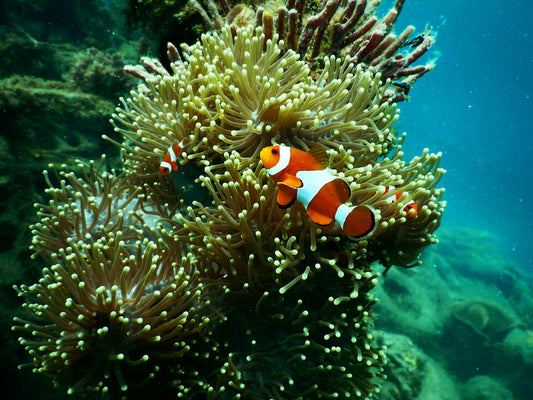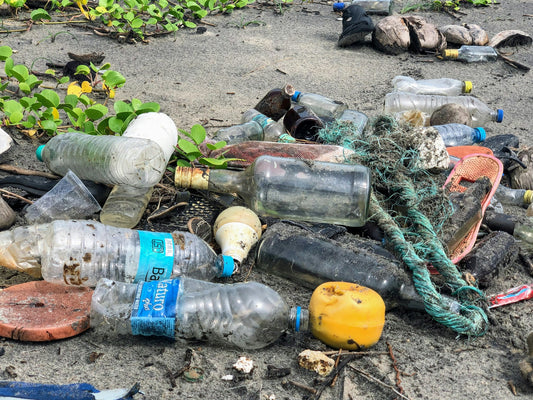Share
Summary:
Say goodbye to harmful chemicals and plastic waste with our ultimate guide to creating a cleaner, healthier home. Discover natural alternatives, ditch harmful ingredients, and embrace sustainable practices for a greener future!
--------------------------
In our mission for a greener and more sustainable lifestyle, we need to address every aspect of our daily routines. An area that offers huge potential is our cleaning habits. Traditional cleaning products contain harmful ingredients and are packaged in plastic, contributing to environmental pollution and health risks.
By adopting zero waste cleaning practices, we can create a cleaner, healthier home while minimizing our ecological footprint. In this guide, we will explore the need for natural zero waste cleaning products, shed light on harmful ingredients, and provide step-by-step instructions to replace household products with sustainable alternatives.
The Need for Natural Zero Waste Cleaning Products
Traditional cleaning products often contain harmful chemicals that can have adverse effects on our health and the environment. Common ingredients such as ammonia, chlorine, phthalates, and synthetic fragrances can pollute indoor air, harm aquatic ecosystems, and even contribute to respiratory problems and allergies. Additionally, the plastic packaging used for these products further adds to the global waste crisis. By opting for natural zero waste cleaning alternatives, we can reduce our exposure to harmful chemicals, promote sustainability, and protect the planet.
A. Understanding Harmful Products
A first step in changing cleaning habits is understanding which products are harmful to ourselves or the planet.
1. Ditch Toxic Chemicals

If you read the label of a standard cleaner, you’ll be shocked by the chemicals you wash down the drain and even inhale while applying the product. Some of the frequently used chemicals are:
-
Ammonia: Found in many window and glass cleaners, ammonia can irritate the respiratory system and cause eye and skin irritation. Prolonged exposure or mixing with other chemicals (such as bleach) can even produce toxic fumes that can cause damage within minutes.
How to identify: Look for "ammonia," "ammonium hydroxide," or "ammonium chloride" on the label. -
Chlorine: Used in bleach and disinfectants, chlorine can irritate the respiratory system and eyes. It can also react with organic matter to form toxic byproducts, such as chloramine and trihalomethanes, which have been linked to respiratory issues and even certain cancers.
How to identify: Check for "chlorine bleach" or "sodium hypochlorite" on the label. -
Phthalates: These chemicals are commonly found in fragrances used in cleaning products. Phthalates have been associated with endocrine disruption, reproductive issues, and adverse effects on the development of children.
How to identify: Phthalates may not always be listed specifically, but you might find "fragrance," "parfum," or "perfume" listed. Since fragrances can contain phthalates, it's best to choose products labeled as "phthalate-free" or "fragrance-free. -
Formaldehyde: Often used as a preservative in cleaning products, formaldehyde is a known carcinogen and respiratory irritant. Prolonged exposure can cause respiratory problems, skin irritation, and allergic reactions.
How to identify: Formaldehyde may be listed as "formalin," "methylene glycol," "formaldehyde releaser," or as specific preservatives like "quaternium-15" or "DMDM hydantoin. -
Sodium Lauryl Sulfate (SLS) and Sodium Laureth Sulfate (SLES): These surfactants are commonly used in many cleaning and personal care products to create foam and lather. They can strip the skin's natural oils, leading to dryness, irritation, and potential skin allergies.
How to identify: Look for "sodium lauryl sulfate," "sodium laureth sulfate," or their abbreviations "SLS" and "SLES" on the label. -
Triclosan: Found in antibacterial products, triclosan is an antimicrobial agent that can disrupt hormonal function and contribute to antibiotic resistance. It may also have negative environmental impacts when it enters water systems.
How to identify: Triclosan might be listed by name as "triclosan" or "triclocarban" in antibacterial products. Luckily, triclosan has been phased out of many consumer products due to health and environmental concerns, but it can still be found occasionally. -
Synthetic Fragrances: Synthetic fragrances in cleaning products often contain a mix of chemicals, some of which can cause allergies, respiratory issues, and skin irritation. They can also release volatile organic compounds (VOCs) into the air, contributing to indoor air pollution.
How to identify: Synthetic fragrances may be listed as "fragrance," "parfum," or "perfume." Opt for products that specifically state "phthalate-free" or use natural essential oils for scent.
Avoid products containing these and other toxic chemicals. Instead, opt for natural alternatives like cleaning alcohol, vinegar, baking soda, and essential oils, which are just as effective and safer for both human health and the environment.
2. Look for Sustainable Packaging

Look for cleaning products that come in reusable, refillable, or compostable packaging. As a last resort, if you only find products in plastic packaging, the packaging should be easily recyclable. This helps eliminate the need for single-use plastic bottles and reduces waste.
3. Avoid Animal Cruelty

Choose cruelty-free cleaning products that are not tested on animals. Many companies now offer alternatives that are ethically sourced and do not contribute to animal suffering. PETA offers great resources to check products for animal cruelty, including trustworthy labels.
4. Save Critical Natural Resources

The main natural ingredient to avoid in cleaning products is palm oil. Palm oil, widely used in many cleaning products, is often associated with deforestation and the destruction of wildlife habitats. By selecting palm oil-free products or those with sustainably sourced palm oil, we can help protect fragile ecosystems.
5. Reduce Your Carbon Footprint

Check where a product and its ingredients are sourced to minimize the carbon footprint. While you can read the label to understand a products’ carbon footprint, there are also many apps available that help you with this task. If a product is sourced abroad, companies have the ability to offset their emissions with trusted partners (e.g. planting trees)
B. Step-by-Step Instructions to Embrace Sustainable Alternatives
1. Cleaning Supplies

- Replace disposable wipes with reusable rags or Swedish dishcloth.
- Opt for natural bristle brushes instead of plastic ones.
- Use biodegradable sponges made of natural cellulose or loofah for dishwashing and general cleaning.
DIY TIP: before throwing out old clothes, cut them into cleaning rags.
2. Kitchen Cleaners

- For dishwashing, opt for a natural dishwashing soap brick, which will last for months, while containing only natural ingredients
- For cleaning kitchen surfaces, cleaning alcohol, vinegar, or natural cleaning tablets will to the trick
DIY TIP: For tough grease stains, sprinkle baking soda on the surface, apply a little bit of lemon juice on it and let it rest for 10 minutes. Wipe clean or scrub with a damp cloth or brush (careful with delicate surfaces).
3. Bathroom Cleaners

- Natural cleaning tablets will work for cleaning all bathroom surfaces
- Use cleaning alcohol to kill bacteria
DIY TIP 1: Make a bathroom cleaner by mixing half a cup of baking soda with the same amount of liquid castile soap and a cup of distilled or boiled water. Apply to surfaces, scrub, and rinse thoroughly. Add essential oils for the scent as you like.
DIY TIP 2: Use a mixture of water, vinegar, and a few drops of tea tree oil as a natural mold and mildew remover. Try different amounts of vinegar and water depending on the dirt.
4. Laundry

- Replace chemical-laden laundry detergents with natural laundry sheets
- Use wool dryer balls instead of single-use dryer sheets to reduce waste and eliminate chemicals.
- If you are skeptical about the cleaning power of any homemade laundry detergent, a natural stain remover will certainly do the trick
DIY TIP: Make your own laundry soap by combining grated castile soap, washing soda, and essential oils.
Zero Waste Cleaning Limits Our Impact on the Planet
By transitioning to zero waste cleaning practices, we can minimize our impact on the environment while creating a healthier living space for ourselves and future generations. Eliminating harmful ingredients, reducing plastic waste, and embracing sustainable alternatives empower us to take an active role in preserving our planet's well-being. Let's embark on this journey together and pave the way for a cleaner, greener future.

![Zero Waste Cleaning: Your Ultimate Guide [2024] - SWOP - shop without plastic](http://www.shop-without-plastic.com/cdn/shop/articles/cleaning.jpg?v=1716979143&width=1500)






